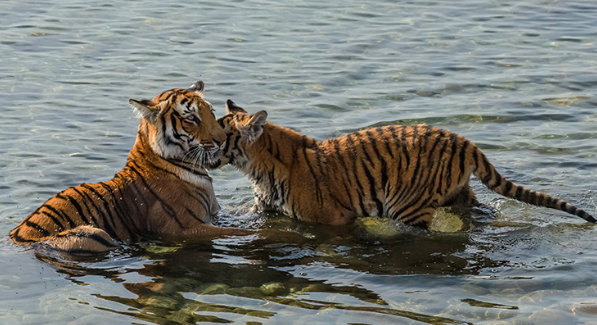Bengal tigers are some of the most magnificent and iconic animals on the planet. Not only are they known for their striking appearance, but they also play a crucial role in their ecosystems and hold cultural significance across the regions they inhabit. Understanding the different types of Bengal tigers can enhance our appreciation of these beautiful creatures and inform conservation efforts.
### The Classic Bengal Tiger
The classic Bengal tiger, scientifically known as Panthera tigris tigris, is the most well-known subspecies. These tigers are characterized by their bold orange coat with distinctive black stripes, and they can be found primarily in India, but also in small populations in Bangladesh, Nepal, and Bhutan. Males typically weigh between 400 to 500 pounds, while females are slightly smaller. The classic Bengal tiger is a top predator, playing a vital role in maintaining the balance of their habitat by controlling prey populations.
### The White Bengal Tiger
The White Bengal tiger is a rare variant, distinguished by its striking white fur and blue eyes. Unlike the classic Bengal tiger, the white coloration results from a genetic mutation and offers no advantage in camouflage, making them more vulnerable in the wild. White Bengal tigers are often bred in captivity, which has led to controversies regarding their conservation status and ethical treatment. Despite their unique appearance, it’s essential to remember that these tigers face the same threats as their orange counterparts, including habitat loss and poaching.
### The Golden Bengal Tiger
Another fascinating variant is the Golden Bengal tiger, which features a lighter orange coat with a golden hue and more pronounced stripes. This coloration is also due to a genetic anomaly and is even rarer than the white Bengal tiger. Golden Bengal tigers are not a separate subspecies, but they capture the imagination of many due to their unusual appearance. Their rarity highlights the importance of diversifying conservation efforts, ensuring all types of Bengal tigers receive the attention they need for survival.
In conclusion, each type of Bengal tiger contributes uniquely to the rich biodiversity of our planet. By learning about the classic, white, and golden variants, we can raise awareness about the challenges these majestic animals face. If you’re interested in helping protect these incredible creatures, consider supporting tiger conservation organizations or visiting local wildlife sanctuaries. Every effort counts in ensuring that future generations can enjoy the beauty of Bengal tigers.

